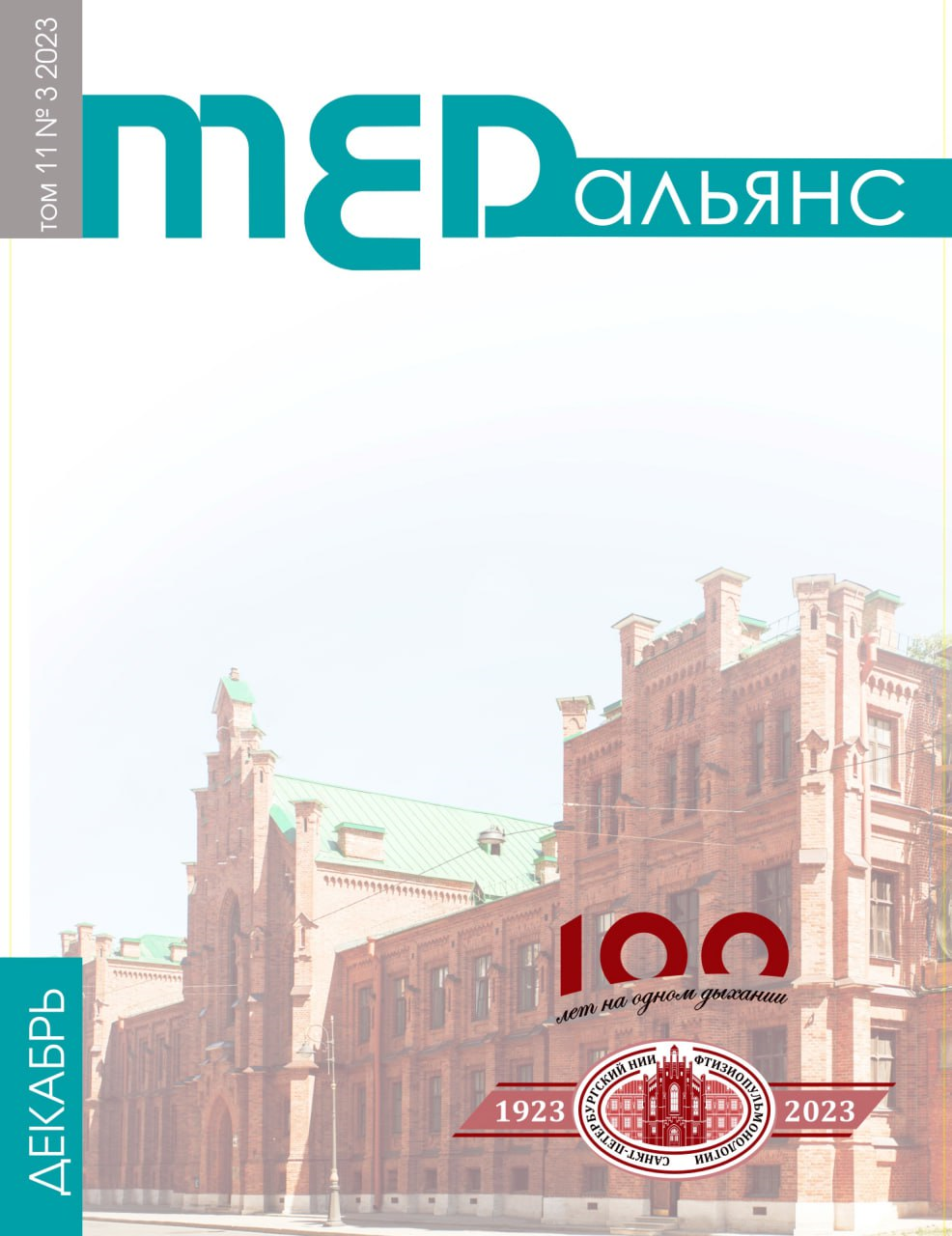Abstract
Introduction. The treatment of patients with recurrent empyema of the pleural cavity associated with bronchial fistula of the main bronchus has been an urgent problem in phthisiosurgery for many decades. There are non-radical methods of treatment using various variants of broncho-obturators and radical methods of treatment, but accompanied by high trauma due to chest decostation. The authors proposed an original method for the elimination of recurrent bronchial fistula and pleural empyema after right pneumonectomy while preserving the frame of the chest. Materials and methods. A retrospective study for the period from 2016 to 2023 included 9 patients who were operated on for empyema of the pleural cavity with a fistula of the right main bronchus according to the original method after previous pneumonectomy. The duration of the fistula before surgery ranged from 4 to 42 months. Bacterial excretion in sputum was preserved in 3 (33.4%) patients. 8 (88.8%) patients had pre-XDR MTB and only 1 (11.1%) had MDR MTB. In all patients, a mixed (specific and non-specific) flora was determined in the pleural fluid. The surgical strategy was multi-staged. At the first stage, upper-posterior thoracoplasty, thoracotomy, resection of the stump of the right main bronchus, its suturing and myoplasty were performed. At the second stage, an open cleaning of the pleural cavity was performed with tamponage of the residual empyema cavity from the thoracostomy, after that vacuum asssisted closure system was applied to the thoracostomy. At the third stage, myoplastic closure of the thoracostomy was performed. The immediate and long-term results of treatment of patients were evaluated. Results. All patients were operated on by the same surgical team. In all cases, resection of the stump of the right main bronchus was performed, for a length of 2 mm to 5 mm. Histological examination of the bronchial resection margin did not reveal tuberculous lesions. In the postoperative period, surgical complications requiring invasive interventions to eliminate them occurred in 22.2%. In 8 (88.8%) patients, the result of treatment was regarded as satisfactory (persistent absence of fistula, absence of progression of pleural empyema). In a patient with persistent recurrence of the fistula, the result of treatment is regarded as unsatisfactory. In the long-term period, all patients with satisfactory surgical treatment were removed from the dispensary register, data for recurrence of empyema and bronchial fistula were not obtained during the control examination. Against the background of anti-tuberculosis chemotherapy, a clinical cure of tuberculosis of the sole lung was achieved with the formation of metatuberculous fibrotic focal changes without destruction. All patients were persistently abacillated. Conclusion. The proposed multi-stage therapeutic surgical tactics for recurrent empyema of the pleural cavity associated with bronchial fistula of the main bronchus is an optimal alternative to supertraumatic and non-radical methods, since it allows reliable elimination of chronic, often recurrent, bronchial fistula with successful treatment of empyema of the residual pleural cavity, and is also accompanied by low traumatism and the best cosmetic effect while maintaining the frame of the chest wall.

